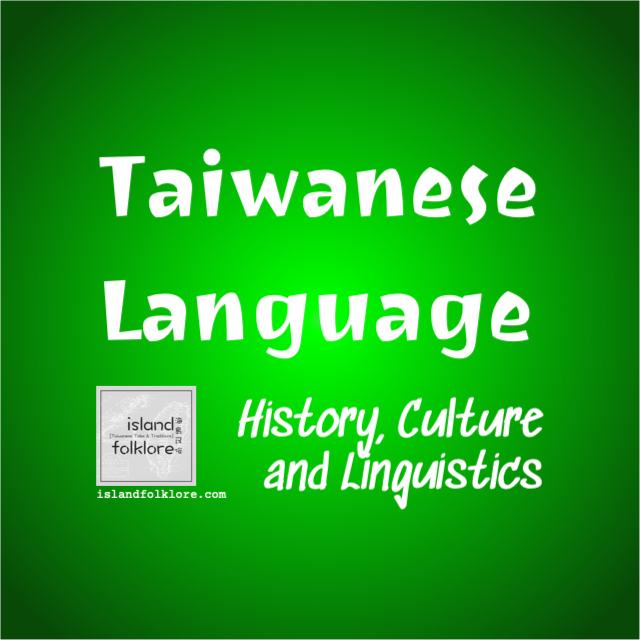Taiwan is home to over 20 living languages! That’s according to Ethnologue, published by US-based SIL International. Taiwan’s languages belong to two distinct groups: The Formosan (indigenous) and Sinitic (Chinese) languages. The linguistic family trees below show the relationships between Taiwan’s languages and their cousins in other parts of the world.

Formosan Languages
The Austronesian languages are an extraordinarily diverse and widespread family of related languages. They are native to places like Madagascar, the Philippines, Malaysia, Indonesia and Polynesian islands like New Zealand, Hawaii and Samoa. Linguists have pinpointed Taiwan as the original homeland of all Austronesian peoples. From there, they and their languages spread far and wide!
The Austronesian dialects that are found in Taiwan are called the Formosan languages. Taiwan’s indigenous people today still speak these Formosan languages and they are some of the oldest and most diverse branches of the greater Austronesian family.

Writing Formosan
Intriguingly, the Latin script is used to write a number of indigenous Taiwanese languages. Due to the influence of Taiwan’s 17th-century Dutch colonizers and later Western missionaries, several indigenous Formosan cultures employ the Latin alphabet to transcribe their languages. These include Amis, Atayal, Seediq and others.
This led to an interesting visual effect where early treaties and contracts between Han settlers from China and Taiwan’s indigenous nations look like they were signed between Sinitic speakers and Westerners. That’s because these documents were composed using Chinese characters alongside Latin letters. Of course, the portions written in Latin script were Taiwan’s native languages.

Sinitic Languages
The Sinitic (Chinese) languages comprise one of the two main branches of the larger Sino-Tibetan language family. Even just within the Chinese branch, there are numerous mutually unintelligible languages and dialects. In Taiwan, three varieties are widespread. They are Taiwanese, Hakka and Mandarin.
While Taiwanese is traditionally Taiwan’s most widely spoken language, Mandarin, introduced to Taiwan after WWII, serves as the island’s primary lingua franca and is the island’s most common second language.
Systems of Writing
Modern Chinese languages and dialects (such as Mandarin and Cantonese) are typically written with Chinese characters. These are adapted from Classical Chinese script used to write the Old Chinese language over 2,000 years ago. Taiwanese, however, is traditionally written with a different type of script.
Like Taiwan’s native Formosan languages, the Latin alphabet is used to write the Taiwanese language. This is done with a system called Pe̍h-ōe-jī, created by Christian missionaries from Europe and North America. It is still widely used to write the Taiwanese language today, especially among Taiwan’s Presbyterian Christian community.

“Language” vs “Dialect”
“A language is a dialect with an army and navy.” So goes the quip, highlighting the arbitrary distinction between the two.
Linguists have no universally accepted method for distinguishing between “language” and “dialect.” Instead, they usually refer to both as different “varieties.” The most useful way to meaningfully distinguish between languages and dialects is mutual intelligibility.
If speakers of two varieties can easily communicate with each other, then they are probably speaking dialects. If speakers of two varieties cannot easily understand each other, then they are probably speaking separate languages (but which may still be related).
The languages of Taiwan fall into two main groups: Formosan (indigenous Austronesian) and Sinitic (Chinese). These two groups are clearly distinct from each other. But within each of these language families, varieties are sometimes considered to be dialects.
But since virtually all of Taiwan’s languages are not mutually intelligible, they are more accurately described as distinct languages (like how French, Spanish, Portuguese, Italian and Romanian are all distinct languages that evolved from a common ancestor—Latin).
Ultimately, language is a tool that is constantly evolving. Over time and distance, originally closely related accents, dialects and varieties can become dissimilar. Exactly at which point a dialect becomes a language is impossible to tell. So an inflexible division between “language” and “dialect” does not reflect reality. What is worth highlighting is that Taiwan has a high degree of linguistic diversity, which reflects the island’s diverse cultural and ethnic roots.




